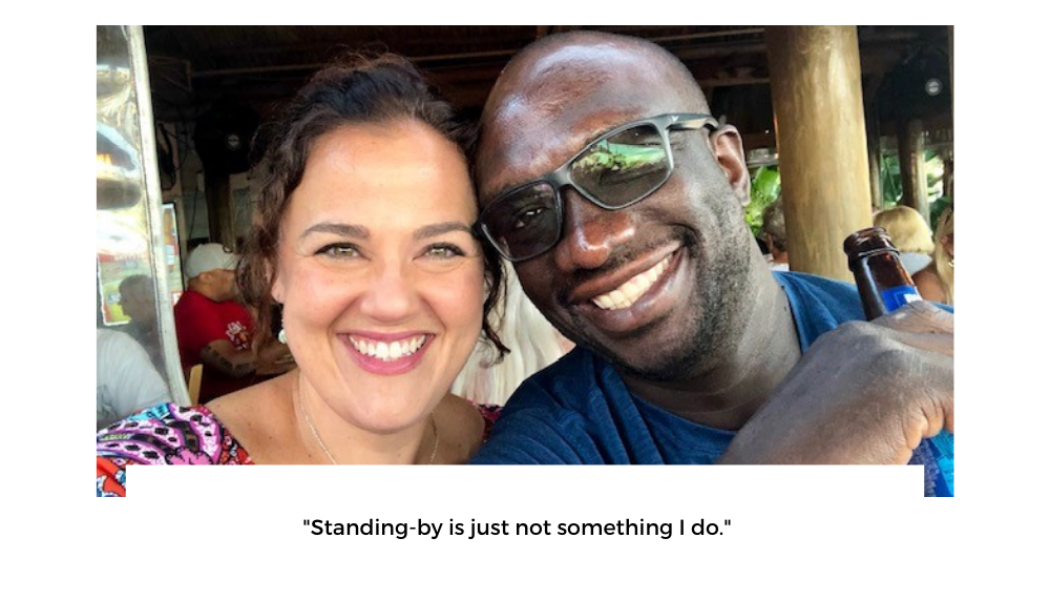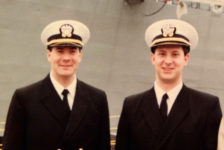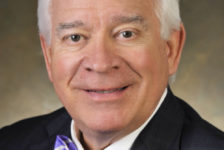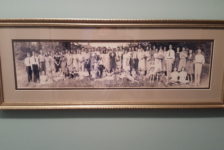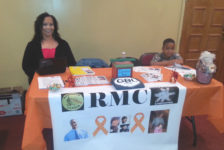When Tracie’s husband was diagnosed with bilateral, multifocal papillary type 1 renal cell carcinoma, she refused to stand-by – instead she stood up. Through research and outreach, she and her husband were able to get a second opinion, which resulted in a dramatically different outcome.
Standing UP
October 20, 2020 – 8:07pm: “The renal biopsy revealed a malignant tumor.”
Those words. The word. Cancer. It’s cancer. I must have read that 1 sentence with 7 words at least 20 times. Did we just get a confirmation that my husband has cancer through an email? My stomach dropped, my heart was racing, and tears filled my eyes. As I sat in the recliner, I looked over at my husband on the couch who was innocently watching TV. I now had information that would forever change our lives. How was I going to tell him?
October 21, 2020 – 10:38am: “This pathology is papillary renal cell carcinoma. This tends to be multifocal and bilateral. We have extensively reviewed your imaging studies and there are numerous tumors in both kidneys. This is a highly unusual presentation nevertheless in such a young patient. Referral to medical oncology. Please standby.”
Standby?!? After numerous imaging studies (CT Chest, MRI Abdomen, MRI Brain, Bone Scan, Pet Scan) over a 4 week period, we learned my completely asymptomatic, 39 year old husband has cancer via an email message. Then, less than 12 hours later, another email tells us there are numerous tumors in both kidneys and we were going to see medical oncology. I have worked in healthcare my entire career. I worked in a Cancer institute for 5 years. I knew what it meant when a surgeon refers you to medical oncology. As it turns out, “standing by” was actually the very last thing I wanted to do.
In just over a week, we were in to see a medical oncologist who specialized in kidney cancer at one of the top cancer centers in the world. We were told we had only one option: immediate bilateral nephrectomy (removal of both kidneys) and begin living everyday dependent on a dialysis machine while hoping for a kidney transplant in 2-5 years. Dialysis? Kidney transplant?
I was no stranger to kidney issues. My father lived with chronic kidney disease for years and had a kidney transplant last year. Donor kidneys are not just growing on trees. Life after transplant is not easy. And good luck getting a kidney when you have had cancer. Still, that seemed better than having cancer, right? I pumped the doctors with question after question and received disappointing answers at every turn.
“Surgery is your only chance at cure.” Let that sink in. When you have cancer, you want it out immediately! What else could we do? We had to chase the “cure.”
Reluctantly, we went to our trusted nephrologist who started to get my husband set-up for dialysis. We went for a tour of a dialysis clinic. We started to plan for dialysis access (port or fistula) and how to fit in those mini-procedures around the bilateral nephrectomies.
During this time, I wrestled with going for a second opinion but thought that would prove futile. We were already at the place where people go for second opinions. My husband saw how frantic I was trying to get him the best treatment. He told me I was “driving myself crazy” and he had made peace with losing both his kidneys. Now, for the good of my mental health, he was essentially asking me to “standby.” Standing-by is just not something I do; deep down, he knew that.
After that first medical oncology appointment, I started looking for facebook groups for kidney cancer. I hoped I could find people with my husband’s condition and take some comfort in their experiences. I found KCCure and their groups targeted for different types of kidney cancer. At that point, all I knew was that it was papillary renal cell cancer and that wasn’t as common as clear cell RCC. Looking back, I was so uneducated. I joined the papillary renal cell group and wrote my first post with tears streaming down my face. That post forever changed the trajectory of our lives:
Responses of support came flooding in immediately. Even though no one had been in the same situation that we were facing, they all recommended advocating for ourselves. One woman, Laura Esfeller, shared her inspiring story with papillary type 2. She was younger than my husband and she fought hard. She urged me again to get a second opinion and put me in contact with Dena Battle, President and Co-Founder of KCCure.
November 1, 2020 – 2:44pm: “Hi Dena, you may remember my post in the facebook group this week…” I poured out my heart and dumped all the information I had in my brain… and hoped she would respond. I was desperate and terrified.
November 1, 2020 – 3:34pm: “Tracie – I’m so sorry you’re going through this… “ Dena went onto share information and offered to contact the National institute of Health (NIH) in Bethesda, MD on our behalf to try to get us in quickly. She ended by writing: “Let’s see what we can do to save your husband!”
I was overjoyed by her quick response and willingness to help. She gave us our first real glimmer of hope! The weight of her final sentence stung, though. I was trying to “save” my husband. In just a few weeks, our lives had turned upside and now I was trying to “save” my husband. What if I couldn’t save him?
November 19, 2020: We had our first consult with Dr. Mark Ball at the NIH in Bethesda. I will never forget his words: “I think we can save one, and maybe both, of your kidneys.”
November 30, 2020: Dr. Ball removed 22 tumors from my husband’s left kidney, and saved the kidney with no loss of function.
January 11, 2021: We returned to NIH and Dr. Ball was able to remove 19 tumors from the right kidney, once again preserving his kidney function.
Mind blown. How could they do this? How was this possible? Why didn’t anyone else tell us this was possible? Did we really almost remove both of my husband’s kidneys unnecessarily??
Thanks to the amazing NIH Urologic Oncology team, who specialize in rare kidney cancers, I’ve learned so much since that fateful day in October when an email message told us my husband has cancer. The NIH confirmed that my husband has bilateral, multifocal papillary type 1 renal cell carcinoma. The “good” news is that this type of renal cell carcinoma is very slow growing and less likely to metastasize outside of the kidneys. The bad news is that these tumors will continue to grow back. In fact, there are still some very small tumors left in both kidneys. The tumors will be watched through scans every 3 months (for at least 5 years at that frequency) where the growth rate will be monitored. Once a tumor reaches 3cm, the NIH will go back in and try to do another partial nephrectomy as tumors have the potential to spread when they get larger than 3cm.
There may be a time when his kidneys can’t handle anymore partial nephrectomies and bilateral kidney removal and dialysis could be in our distant future. Notably, the gene responsible for this disease has not yet been isolated. However, the NIH has been researching this gene mutation and is getting closer to isolating the gene. That is key because gene isolation can lead to targeted treatments to prevent or slow the growth of these tumors. My husband’s participation in this clinical trial (by analyzing his tumors) will help to further that research and isolate the gene! Any and all help in funding kidney cancer research also gets us closer to an actual cure.
January 20, 2021: We drove home from the NIH following the second partial nephrectomy. As we left the NIH grounds, I realized that we did it. We saved his kidneys. And we will save him too.
I did not standby. I stood UP.

